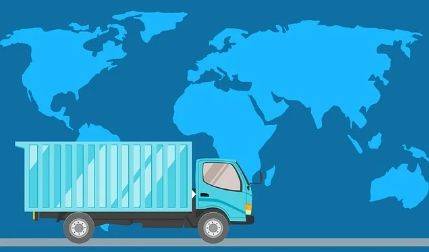What is the operation process of picking up goods?
What Does "Pick Up Goods" Mean?
In the realm of international trade, "pick up goods" refers to the process of collecting or taking possession of goods from a designated location, typically after the completion of customs clearance and other related administrative procedures. This step is crucial in the supply chain and logistics sector, marking the transition of goods from the seller's responsibility to the buyer's or an appointed logistics provider's custody.
The term encompasses a range of activities including, but not limited to, retrieving cargo from ports, warehouses, or free trade zones, inspecting the goods for integrity and completeness, and initiating the onward transportation to the final destination. "Pick up goods" signifies a pivotal moment in the shipping process, where ownership, or at least custody of the goods, effectively shifts. This is often documented by the issuance of a "Delivery Order" by the shipping line or freight forwarder to the party picking up the goods, authorizing the release of cargo to them.

How to Operate "Pick Up Goods"
The operation of picking up goods in an international trade context is methodical and requires adherence to specific steps to ensure a smooth transition. Here's an outline of the general process:
1. Notification and Documentation: The first step involves receiving a notification from the shipping company or freight forwarder that your goods are ready for pickup. This notification should be accompanied by essential documents such as the Bill of Lading (B/L), Delivery Order (DO), and possibly a customs release notification if the goods have already cleared customs.
2. Verification and Preparation: Prior to picking up the goods, verify the details of the shipment against your records for accuracy. Ensure you have all necessary documents, including identification and company authorization letters if someone is picking up on your behalf.
3. Customs Clearance: If not already completed by the shipper or an agent, customs clearance must be done. This involves presenting the B/L, invoice, packing list, and any other required documents to customs authorities and paying relevant duties and taxes.
4. Arranging Transportation: Depending on the size and type of cargo, arrange appropriate transportation. This could involve booking a trucking service for containerized goods or specialized transport for oversized or hazardous materials.
5. Collection of Goods: At the designated pickup point, present your documents (Delivery Order, ID, etc.) to the warehouse or port authority. The goods will then be released into your custody. This is also the time to inspect the goods and note any discrepancies or damage.
6. Transport to Final Destination: Finally, transport the goods to their final destination, ensuring safe and compliant handling throughout the journey.
Key Considerations When Picking Up Goods
Picking up goods, especially in an international context, involves careful attention to several critical factors to avoid delays, financial loss, or legal issues. Here are some key considerations:
- Timeliness: Be aware of the storage free time (the period during which the goods can be stored free of charge) at the port or warehouse and aim to pick up the goods within this period to avoid incurring additional storage fees.
- Documentation Accuracy: Ensure all documents are accurate and complete. Discrepancies can lead to delays or refusal of the goods' release.
- Customs Regulations: Understand and comply with the customs regulations of both the exporting and importing countries. Failure to do so can result in penalties, seizure of goods, or other legal complications.
- Inspection of Goods: Upon collection, inspect the goods thoroughly for any damage or shortage. Any issues should be documented and reported immediately as they can affect insurance claims and liability.
- Security and Safety: Ensure that the transport and handling of goods comply with safety standards, especially for hazardous materials. Proper packaging and labeling are crucial.
- Insurance: Have adequate insurance coverage for the goods from the point of pickup to the final destination to protect against loss, damage, or theft.
By understanding and efficiently managing the "pick up goods" process, businesses can ensure a smoother flow in their international trade operations, minimizing risks and enhancing efficiency.
Related articles

 WeChat of CBiBank
WeChat of CBiBank